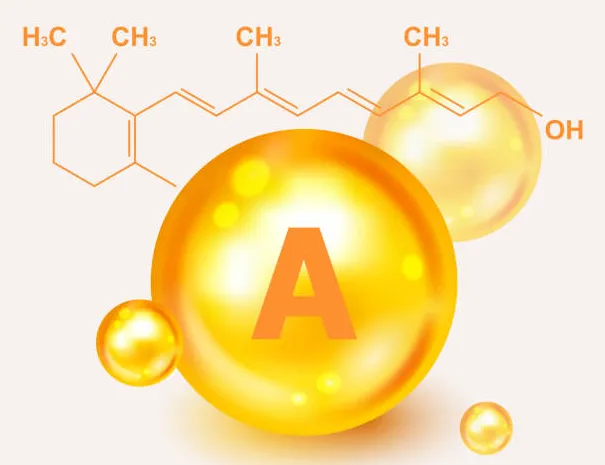THE BLOG
The Ultimate Fitness Blog for Dads
TOPICS
Welcome to Abs For Dads, your premier resource for time-efficient fitness solutions tailored for busy fathers. Discover practical tips and expert advice to transform your health and fitness, seamlessly integrating into your demanding schedule.

Fitness
Explore our curated fitness tips and routines designed to maximize efficiency for the modern dad. Whether at home or the gym, our time-sensitive workouts ensure you achieve optimal results with minimal time investment.

Nutrition
Unlock the secrets of hassle-free nutrition with our easy-to-follow meal ideas and delicious recipes. Abs For Dads empowers you to make informed food choices that align with your fitness goals, promoting vitality and strength.

Lifestyle
Enhance your overall well-being with our lifestyle hacks. From stress management to effective time optimization, our blog covers a spectrum of topics ensuring you achieve success in your fitness journey.

The Nutrition Fundamentals: Vitamin A
Hey dads! We’re continuing our Nutrition Fundamentals series with a look into some of the most important micronutrients out there: vitamins! Naturally, we’re going to start at the top. So, if you're looking to keep your vision laser sharp and your skin looking youthful, it's time to focus on a key player in the nutrition game: Vitamin A. Not just good for your eyes, this Vitamin is crucial for your immune system and overall cell health. Let’s dive into why Vitamin A should be on your radar and how you can easily incorporate it into your busy lifestyle.
Understanding Vitamin A: More Than Meets the Eye
Vitamin A isn't just one compound but a group of nutrients critical for vision, immune function, and skin health. There are two main types of Vitamin A in the diet:
Preformed Vitamin A: Found in animal products and includes retinol, which your body can use directly.
Provitamin A Carotenoids: Found in plants; your body converts substances like beta-carotene into Vitamin A.
Let’s break down each and talk about what you can expect from both.
Preformed Vitamin A (Retinoids)
What It Is and Where to Get It: Preformed Vitamin A, also called retinol, is the ready-to-use version of Vitamin A. It’s what your body can utilize right off the bat without needing to convert it from anything else. You’ll find this type in animal-based foods, so if you’re not shy about meat and dairy, here’s where you can load up:
Liver: Seriously rich in retinol, if you can stomach it!
Fish Oils: Cod liver oil packs a punch.
Dairy Products: Milk, cheese, and butter—all the good stuff.
Eggs: Especially the yolks.
Why It Matters: This type of Vitamin A is a heavy lifter for keeping your eyes sharp, your skin clear, and your immune system on guard. It’s also key for keeping your teeth and bones strong and plays a crucial role in keeping your reproductive system running smoothly.
Provitamin A Carotenoids
What It Is and Where to Get It: These are the plant-based cousins of Vitamin A. Your body turns these colorful compounds into the Vitamin A it needs. The top players here are beta-carotene, alpha-carotene, and beta-cryptoxanthin. To get your fill, turn to:

Carrots: A beta-carotene powerhouse.
Sweet Potatoes: Another fantastic source of beta-carotene.
Spinach and Kale: These leafy greens are loaded with carotenoids.
Bell Peppers and Tomatoes: They’re not just pretty; they’re packed with beta-carotene and beta-cryptoxanthin.
Why They’re Great: Besides giving plants their vibrant colors, when you eat these, they act as antioxidants to protect your cells from damage. Once they’ve transformed into Vitamin A in your body, they help with everything from seeing at night to fighting off germs. Plus, since your body only converts what it needs, you don’t have to worry about getting too much and hitting toxicity.
Balancing Your Intake:
Mix It Up: Try to get both animal and plant sources of Vitamin A in your diet. This way, you’re covered with immediate use Vitamin A and the antioxidant benefits of carotenoids.
Dietary Choices: If you’re a vegetarian or vegan, focus on those colorful fruits and veggies for your carotenoids. Meat-eaters, remember not to overdo it with the liver and fish oils to avoid too much preformed Vitamin A.
Health Needs: Certain conditions, like issues with fat absorption or liver problems, might affect how you take in Vitamin A. If that’s you, a chat with your doc can help you figure out the best approach.
Daily Dose: How Much Do You Need?
Alright, fellas, just like you might need a different amount of coffee to kickstart your day compared to your buddy, the amount of Vitamin A you need can vary. Generally, it's based on your age, whether you’re rocking a Y chromosome, and a couple of other factors.
For the Gents: Adult men should aim for about 900 micrograms of Retinol Activity Equivalents (RAE) per day. Think of this as your daily quota to hit the mark without going overboard.
For the Ladies: Women are recommended to get about 700 to 800 micrograms RAE daily. It’s slightly less, but hey, it’s all about balance.
Why Bother with the Right Amount?
Vitamin A isn't just another item on your nutritional to-do list; it’s essential for keeping your eyes sharp enough to see who’s sneaking the last piece of pizza, supporting your immune system (because who has time to get sick?), and keeping your skin looking smoother than your best pick-up line. Not getting enough can lead to issues like night blindness—making it really hard to navigate that midnight snack run without a mishap.
Checking Your Vitamin A Levels
Wondering if you're getting enough Vitamin A? Take a closer look at your diet. Are you eating things like liver, dairy, or lots of colorful veggies? You might want to track what you eat using some of the handy online tools out there to see if you’re hitting the mark.
If you start noticing things like night blindness, unusually dry skin, or you're getting sick often, these could be signs you’re low on Vitamin A. If that’s the case, it’s a good idea to chat with your doctor. They can help figure out exactly how much Vitamin A you need, tailoring their advice to fit your age, lifestyle, and overall health.
Fun Fact to Impress: Did you know that eating a single medium sweet potato gives you more than a full day’s requirement of Vitamin A? Talk about a nutritional overachiever!
So, remember to keep it colorful on your plate—it’s not just for looks, it’s for your health. This way, you can hit those Vitamin A goals without even thinking about it, leaving you more time to focus on the more important things in life, like arguing about the best superhero (Batman probably keeps up his Vitamin A intake by the way). And if you’re ever in doubt, a chat with your doc can help you nail that daily Vitamin A sweet spot.
Making Vitamin A Work for You
Tapping into the powers of Vitamin A isn't just about dodging deficiencies—it's about turbocharging your overall health. Here’s how you can harness the benefits of Vitamin A to keep you firing on all cylinders:
Boost Your Shield
Vitamin A is like a coach for your immune system. It doesn't just support the team—it helps train and strengthen your body's defense players, namely white blood cells, to fight off invaders more effectively. By maintaining the health of mucous barriers in your eyes, lungs, and gut, Vitamin A keeps these first lines of defense robust, blocking out harmful bacteria and viruses before they can cause trouble. So, by keeping up with your Vitamin A intake, you're essentially giving your immune system the pep talk it needs to stay alert and ready to tackle whatever comes your way. Think of it, in conjunction with the other immune-supporting Vitamins, as your nutritional secret weapon for keeping those sick days at bay.
Food First, Supplements Second
When it comes to getting your Vitamin A, it's generally better to focus on foods rather than supplements. Foods that are rich in Vitamin A offer a comprehensive package of nutrients that not only help your body absorb Vitamin A more efficiently but also provide additional health benefits. This makes them a smarter choice for overall health compared to supplements, which might fill specific gaps but don't offer the same broad spectrum of advantages. So, before you think about supplements, consider boosting your intake with natural sources like carrots, sweet potatoes, and spinach to get the most out of what you eat. Supplements have a place, and that’s predominantly for people who struggle with gaining their appropriate intakes in more natural ways or have notable deficiencies.
A Balancing Act
While getting enough Vitamin A is key, going overboard isn’t a great idea either. Too much of the preformed type from animal sources can hit you with some not-so-fun effects like nausea or dizziness, and it can get serious with liver damage if you really overdo it.
Stick to the safe side: guys should keep it under 3000 micrograms per day. Keeping within these limits helps you dodge the downsides of too much Vitamin A.
Integrating Vitamin A through your meals not only ups your health game but also adds delicious diversity to your diet. Keep it balanced, enjoy the natural goodness, and you'll be setting yourself up for a win in wellness.
Final Thoughts: Vital Vitamin A
To put it all together, it’s important to understand the importance of how building Vitamin A into your daily diet helps set the stage for lasting health benefits. Whether it’s through a steaming bowl of sweet potato soup or a refreshing carrot and spinach salad, getting your fill of Vitamin A can be delicious and simple. Remember, a balanced approach to nutrition keeps you running at your best—both at home and in all your adventures.
Takeaways
Two Main Types of Vitamin A: Preformed Vitamin A (retinoids) found in animal products, and provitamin A carotenoids found in colorful fruits and vegetables.
Importance of Variety: Mix both animal and plant sources in your diet to get the full spectrum of Vitamin A benefits, from direct usage of retinoids to the antioxidant properties of carotenoids.
Daily Needs: Adult men need about 900 micrograms RAE of Vitamin A daily, while women need about 700 to 800 micrograms RAE.
Symptoms of Deficiency: Keep an eye out for signs like night blindness, dry skin, and increased susceptibility to infections which might indicate a deficiency.
Food First, Supplements Second: Opt for natural sources over supplements for a better balance of nutrients and to avoid the risks associated with high intake levels.
Monitoring Intake is Crucial: Regular checks on your diet can help maintain the right balance of Vitamin A, preventing both deficiencies and excessive intake.
Consult Healthcare Providers: For personalized advice based on individual health needs and to ensure safe levels of consumption.

Where Busy Dads Thrive in Health and Fitness!
Join the Abs For Dads community and redefine your health and fitness narrative. Bookmark our blog for ongoing insights. Prioritize your health without compromising your busy lifestyle – because being a fit and active dad is within reach.
Like What We're Saying? Sign Up For Our Newsletter!

Call 877-395-7147
Email:travis@absfordads.org
Site: www.absfordads.org

Abs For Dads LLC Privacy Policy
